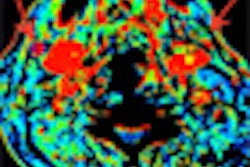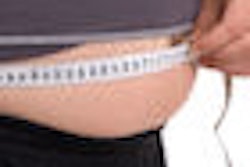
NEW YORK (Reuters Health), Feb 2 - When a noninvasive test for ruling out coronary artery disease is appropriate, CT-based angiography is more sensitive and specific than MRI-based angiography, a new meta-analysis shows.
Noninvasive angiography is most useful for patients with a low or intermediate risk of coronary disease, as a first step in determining whether invasive assessment is needed, according to senior author Dr. Marc Dewey, from Charité Medical School, Berlin, and his colleagues. Whatever test is chosen should produce few false-negative results and thus have a relatively high sensitivity.
In searching MEDLINE and other sources, Dr. Dewey and his group identified prospective studies that compared conventional angiography either to CT (89 studies; 7,516 patients) or MRI (20 studies; 989 patients).
In the February 2 Annals of Internal Medicine, the researchers report that on pooled analysis, CT was 97.2% sensitive and 87.4% specific in detecting clinically significant coronary disease. The sensitivity and specificity of MRI were lower: 87.1% and 70.3%, respectively.
When the analysis was confined to the 45 studies of patients with suspected coronary disease, the sensitivity and specificity of CT were even higher, 97.6% and 89.2%, respectively.
Further analysis showed that CT scanners with more then 16 rows were significantly more sensitive than scanners with fewer rows: 98.1% versus 95.6% (p < 0.05). Also, CT was more sensitive with heart rates less than 60 beats/min (p < 0.001).
"Our analysis indicates that CT should be considered the foremost noninvasive alternative to conventional angiography for detecting and ruling out coronary artery stenoses in selected patient populations," the authors conclude.
They add, "Randomized studies are clearly needed to address the potential of coronary CT angiography for use in triage as a means of positively altering management and outcomes in patients with suspected coronary artery disease."
Ann Intern Med 2010;152:167-177.
Last Updated: 2010-02-01 17:46:15 -0400 (Reuters Health)
Related Reading
Analysis favors coronary CTA over stress MPS for chest pain, January 15, 2010
CTA motion model aims to improve cardiac function analysis, January 11, 2010
Patients with peripheral arterial disease may need cardiac imaging, December 30, 2009
Echocardiography test beats SPECT for predicting problems after MI, December 7, 2009
Copyright © 2010 Reuters Limited. All rights reserved. Republication or redistribution of Reuters content, including by framing or similar means, is expressly prohibited without the prior written consent of Reuters. Reuters shall not be liable for any errors or delays in the content, or for any actions taken in reliance thereon. Reuters and the Reuters sphere logo are registered trademarks and trademarks of the Reuters group of companies around the world.


















